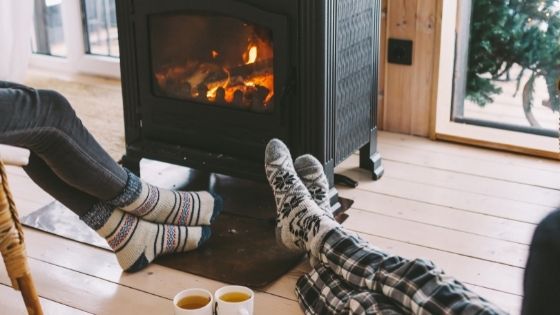Winter can be harsh on your home and your budget. Heating costs go sky high if you are not well prepared for the winter, and minor issues that you were able to ignore during the warmer portion of the year can turn into big problems. A free first time central heating grants may save you hundreds of dollars in energy costs while also maintaining your home warm and healthy.


Here are the things to do to be ready for winter. Your house and your wallet will be better off with these small fixes and DIY projects. So, here we go!
Insulate your doors and windows
You should check the doors of your home for cold air leaks and fix those places.
There are two ways you can go about doing this – the modern way, where you use an infrared thermal gun to see where the cold air is entering your home, or the old-fashioned way, where you simply light a candle and check the flame (it will move toward you whenever there is air coming in from outside).
V-seal weather stripping works both for doors and windows. Just make sure to place them nicely and evenly so you can open and close them with ease.
For windows, you can also use a draft snake kit. It is a mix of foam and fabric to be placed at the bottom side of your window, made to stop cold air from getting inside.
If there are gaps in your windows, use rope caulk to fill in the large ones, while you can fix more minor cracks with several layers of nail polish.
Finally, you can use shrink film to insulate your windows. It is a plastic cover that has to be heated with a hairdryer, but, once in place, it creates a strong seal that prevents any cold from entering your home. Once the warm weather starts again, you can remove the film with some rubbing alcohol.
Don’t forget about the pipes
Various pipes that run throughout your home and under it are also highly susceptible to cold weather. That is why you should also do whatever it takes to keep your pipes from freezing.
If you have any plastic pipes in your home, you should know that they are particularly sensitive to the cold. You can protect them yourself by getting foam insulation tubes and sliding them over your plastic pipes.
This way, you will be able to reduce the heat loss while simultaneously preventing the pipes from getting too cold and bursting in the middle of the winter, when you least need such a hassle.
Check your roof as well
While we are talking about things that you do not want to discover in the middle of the winter, a leaking roof must be somewhere high on that list. That is why you should carefully inspect your roof before the harsh days of winter come.
Look for cracked caulk or rusty spots on flashing. Also, see if any shingles are bulging, curling, blistering, or even missing. Sometimes, it is even better to replace your roof instead of fixing a bunch of issues.
If you see any moss or other parasitic plants growing on your roof, that could be a sign that the roof underneath is rotting. The only exception to this rule is the black algae – they are not a sign of any serious trouble.
While you are out there inspecting your roof, you should also clear out your gutters and downspouts. Clogged drains can get frozen during the winter and make ice dams, which can lead the excess water to your home’s foundation and cause some severe damage.
To prevent this, clean your gutter from all the debris and fallen leaves and gunk. Also, make sure that the channels are firmly standing and replace any materials that need replacing.
Dryer Vent Cleaning is essential for maintaining appliance efficiency and preventing fire hazards. Regular cleaning removes lint buildup and ensures proper ventilation, prolonging the life of your dryer and ensuring safety.
Prepare your heating and AC system for the winter
One more thing to check before the temperatures get too low is whether your HVAC system works as well as it did last winter.
The first thing you should do is change your filters. Dust off all the vents so you can get the maximum from your heating system.
Inspect your radiators to see if they are leaking and replace any valves that look suspicious. And – this one should go without saying – make sure that your boiler is in the proper working condition. If you’re boiler has been around for quite a long time, it’s best to replace it since you can also save energy from a latest model and make sure to check boiler prices before purchasing one.
If you want to save some serious money in the long run, you can also seal the ducts on your furnace or water heaters. By doing this, you will save a significant portion of the heat and also prevent the possibility of dangerous gases such as carbon monoxide from entering your home.
However, this process can be a bit tricky if you are not an expert and sometimes it also requires a combustion safety test to be conducted beforehand, so this is the type of project that is much better left to the professionals.
If you choose to do this by yourself, use metallic tape rather than duct tape to seal the ducts. Mastic sealant works even better.


























